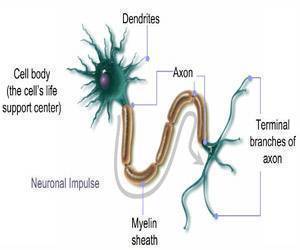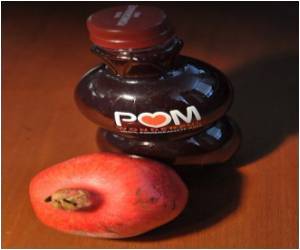Death by medicine is a
twenty-first century epidemic, and America’s war on drugs is clearly
directed at the wrong enemy.” –Dr. Joseph Mercola
I have briefly focused on mushrooms and
cannabis as medicine sources. Now, it is only fair to shine the
spotlight on the other side of the medicinal spectrum: prescription
drugs. One could go through and list the pros and cons of each
individual prescription drug or, to save some time, one could first
approach prescription drugs as a whole. Doing so exposes an alarming
truth, ringing louder than the individual benefits of each drug.
Prescription drugs are currently responsible for more deaths annually
than illegal drugs. According to Tom Frieden, the CDC director himself,
“it’s a big problem, and it’s getting worse .”
Out of the 783,936 annual deaths from conventional medicine mistakes, approximately 106,000 of those are the result of prescription drug use . According to the Journal of the American Medical Association,
two-hundred and ninety people in the United States are killed by
prescription drugs every day

Even if prescription drugs do not
literally kill a patient though, they slowly kill their mind and body.
This alters their ability to innately feel deeply and compassionately,
the patient can be stripped piece by piece of his inner awareness and
inner consciousness, the very essence of their being.
Death by Rx can be sentenced in the form
of many, often times subtle masks. Since it happens slowly, the
clouding of the patient’s once clear brain goes unnoticed as the fog
sets in so densely that he is no longer able to decipher if this new
state of consciousness is “normal” or if it is better or less than it
should be; rather, it just is. The body system is inevitably
forced to adjust to the foreign chemicals the patient pops in his mouth
every morning, activating the conditioning of acceptance of his new
found state of awareness as if it is as it has always been. As if this
shift in consciousness ceased to ever occur. Little by little he fades,
until the place where his mind now resides is one far away.
Prescription pills merely treat, or
should I say bandage, undesirable behaviors and sensations as opposed to
addressing the underlying root cause of the problem. Band-Aids
disintegrate as the medication fades, only to unveil unwanted symptoms
once more. For example, a patient tells their doctor they are
abnormally tired, at which point the doctor delivers a diagnosis of
“Chronic Fatigue Syndrome” equipped with a prescription for a medication
that promotes “wakefulness” such as Vyvanse, Nuvigil, Provigil, or
Adderall. Entering the picture before you can so much as dig your toes
into the problems accompanied with use or potential abuse of stimulants
is a bright red flag. One that arose before the doctor’s pen was able to
so much as brush against his Rx pad. “Chronic Fatigue Syndrome,”
similar to countless other diagnoses accepted by an outlandish amount of
patients with each given day, is not a diagnosis. It is a
symptom. A symptom of a diagnosis that the doctor failed to put a
respectable amount of effort into identifying. People do not become
chronically tired for no reason, lest they fall chronically lazy; in
which case a prescription surely exists for as well. Chronic
debilitating fatigue is a clear sign the body system is not functioning
at its optimal level. Knowledge that the body will always work to do
what is necessary to survive, and that even then, it is still immensely
fatigued, sets off a deafening siren signaling the presence of a problem
too big for the body’s system to compensate for. The sad and
infuriating truth is that a large handful of people diagnosed with
“Chronic Fatigue Syndrome” and numerous other disorders are in reality
suffering from something as simple as a nutritional deficiency, easily
identifiable with a hair analysis test. I use the term “simple” because
when this is the case, a stout dose of the select nutrient may be
administered to the patient on a temporary basis, during which the
deficiency will correct itself and the patient will be alleviated of
“Chronic Fatigue Syndrome.”
Scenarios like this easily occur due to
the average dietary standards, or lack thereof, followed by the majority
of society. It is truly a shame to think of a person taking
prescription drugs with an essay length of possible side effects, when
the answer to their health problem lay within the painless process of
nutrient replenishment all along. Some doctors, not all, are quite apt
to spatting off spoof diagnoses and prescribing whatever dangerous drug
their alleged diagnosis may require. And to what expense? Useless,
avoidable suffering of a patient whose doctor overlooked the most
obvious and important symptom of all -that the patient, like himself, is
a human being. An equal being treated inhumanely by a fellow human
being who he sought out with trust regarding his problem. Take a step
back, take the truth in. This happens frequently, so there is no use to
pretend, let it all sink in. Now, who is the truly sick one?
Logically speaking, the war on drugs
would be on the ones responsible for the most fatalities and health
complications, the ones that are easily accessible and right in front of
our faces, the ones which remain legal despite all this; rather than on
the drugs that are already illegal and monitored, more difficult to
obtain, and responsible for less deaths. Taking the bigger picture into
account, if the war on drugs was honestly centered on the well-being of
society, focus would be placed on drugs most harmful to the human body
system, prescription drugs. But that is logically speaking and
unfortunately, logically speaking commonly translates to wishful
thinking in the world of war, medicine and illegal drugs. With each
passing moment, “logic” becomes more and more of a foreign concept to
the major parties in charge of the world of conventional western
medicine.
References:
1. Null, G PHD. (2011). Death by Medicine. Mount Jackson, VA: Praktikos Books.
2. Mercola, J. “The New Epidemic Sweeping Accross America (and it’s Not a Disease). Mercola.com. 26 October 2011. Web. 1 May 2013. http://articles.mercola.com/sites/articles/archive/2011/10/26/prescription-drugs-number-one-cause-preventable-death-in-us.aspx
3. Glover, S, Girion, L. “Prescription
drug-related deaths continue to rise in U.S.” Los Angeles Times. 29
March 2013. Web. 1 May 2013. http://www.latimes.com/local/lanow/la-me-ln-prescription-drugrelated-deaths-continue-to-rise-20130329,0,2980747.story
4. Starfield, B. (2000). The Journal of the American Medical Association (JAMA) Vol 284, No 4. Johns Hopkins School of Hygiene and Public Health.
By: Shell MW
Courtesy: Collective Evolution
 Cilantro also known as coriander and Thai parsley can be used to purify drinking water, say researchers.
Cilantro also known as coriander and Thai parsley can be used to purify drinking water, say researchers.









